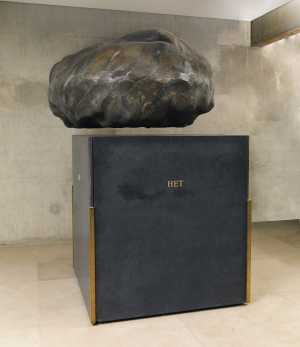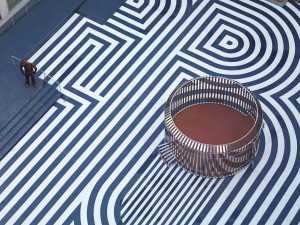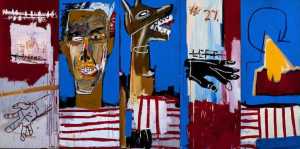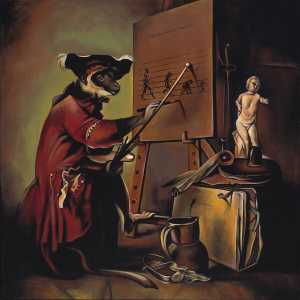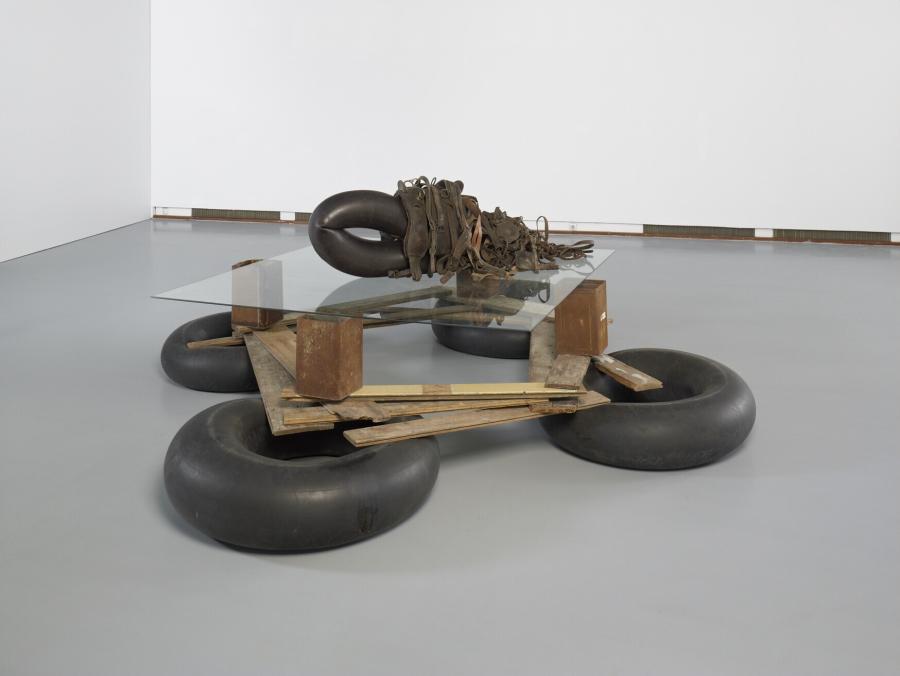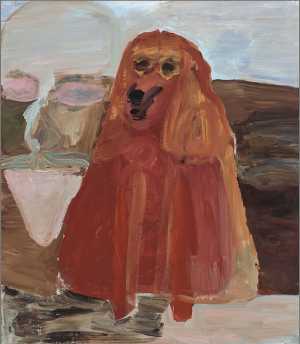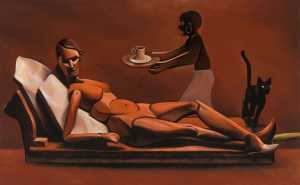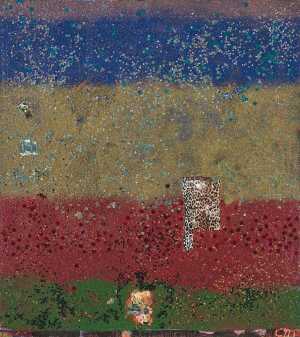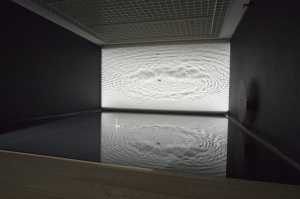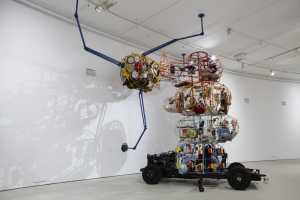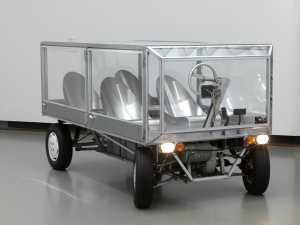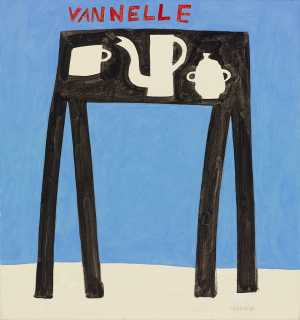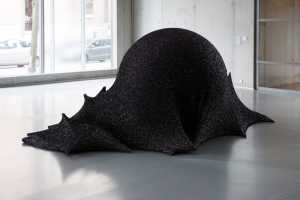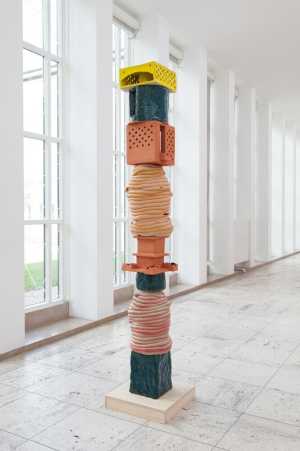The base was for a long time a selfevident factor in sculpture. As the link between the sculpture and its surroundings, it offered the sculpture a space of its own and literally raised its status. The base is a factor that often plays an important part in the work of Carel Visser. In 'Animal' base and sculpture constitute a close-knit unit in both form and material. The animal, composed of the inner tube of a tyre tied up with rope and laden with a horse's harness, is placed on a transparent field glass, which is raised above the ground by a base construction made of tins, wood and further inner tubes. Flouting all the loftiness of the classic equestrian statue, Visser's moribund animal lies on a base that exudes an unstable vulnerability.

Specifications
| Title | Animal |
|---|---|
| Material and technique | Rubber, leather, tin box, glass, wood |
| Object type |
Assemblage
> Three-dimensional object
> Art object
|
| Location | This object is in storage |
| Dimensions |
Height 135 cm Width 300 cm Length 320 cm |
|---|---|
| Artists |
Artist:
Carel Visser
|
| Accession number | BEK 1602 1-57 (MK) |
| Credits | Purchased 1984 |
| Department | Modern Art |
| Acquisition date | 1984 |
| Creation date | in 1983 |
| Internal exhibitions |
Kunst van formaat. De collectie XL vanaf de jaren vijftig (2018) |
| Research |
Show research Digitising Contemporary Art |
| Material | |
| Object | |
| Geographical origin | The Netherlands > Western Europe > Europe |


